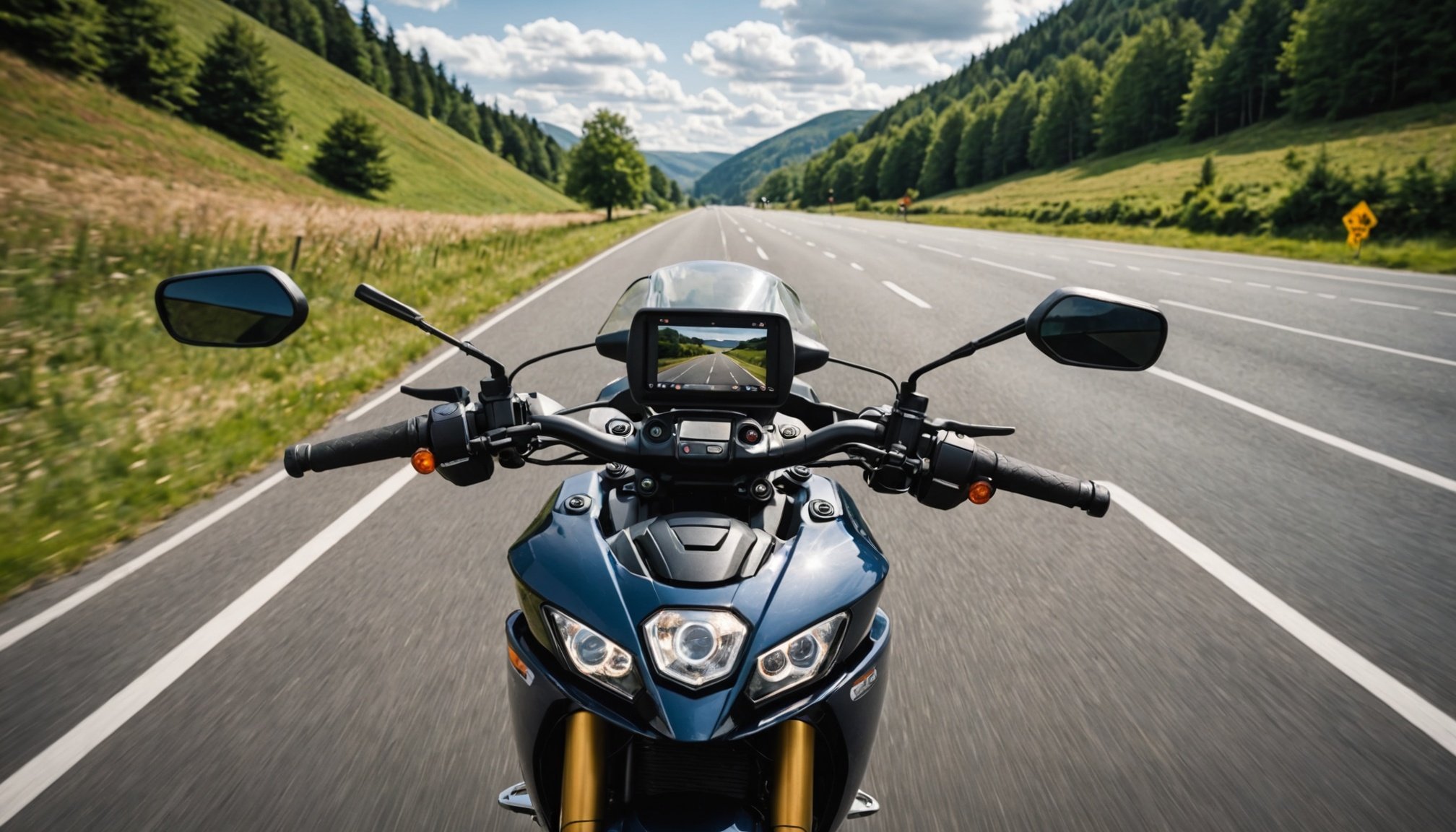Legal Requirements for Dash Cameras in the UK
Navigating the UK road laws regarding dash camera usage requires a good understanding of legal compliance. Although dash cameras are legal, there are certain regulations to be aware of.
Firstly, the UK regulations allow individuals to use dash cameras for personal use. However, it is crucial to ensure that these cameras do not obstruct the driver’s view, as this could lead to heavy fines. Footage captured can be shared if it does not violate privacy laws, and capturing audio is generally discouraged due to privacy regulations.
Also to discover : Ultimate guide to installing a gps lap timer on your sport bike: boost your performance tracking across uk racing circuits
Legal compliance is further reinforced by the necessity for legal disclaimers when you intend to use this footage. This means that when footage is shared, there should be clear communication about its purpose, especially in incidents involving law enforcement.
Non-compliance, deliberately or inadvertently, with these dash camera regulations might result in various penalties. Consequences could range from fines up to £1000, especially if the camera obstructs driving. Moreover, misuse of footage could lead to legal challenges under the Data Protection Act 2018.
In parallel : Ultimate guide to installing a gps lap timer on your sport bike: boost your performance tracking across uk racing circuits
In summary, while dash cameras are beneficial, ensuring adherence to the pertinent UK road laws is essential for safe and lawful usage.
Choosing the Right Dash Camera for Sport Bikes
Selecting the appropriate dash camera for sport bikes can significantly enhance your riding experience. When exploring dash camera options, several key features should be considered to ensure you make the best choice.
Primarily, seek out sport bike cameras that offer high-resolution video recording. This ensures clarity in footage, which can be essential for capturing crucial details during rides. Additionally, waterproof capabilities are vital. Given that sport bikes are often exposed to various weather conditions, a waterproof feature will protect your device from rain and moisture damage.
The ability to withstand vibrations is another essential consideration. Sport bikes are known for their speed and agility, which means they encounter numerous bumps and jolts. Consequently, a dash camera with robust vibration-resistant features will maintain steady footage, avoiding distorted images.
When comparing various brands, consider models that also provide wide-angle lenses, night vision, and ease of mounting. Leading brands often include these in their designs, enhancing the overall utility of their best dash cameras. Evaluating battery life and storage capacity can also aid in making an informed decision.
Each feature plays a crucial role in ensuring your dash camera is reliable and efficient, delivering excellent performance no matter the riding conditions.
Step-by-Step Installation Guide
Installing a dash camera on your sport bike can enhance safety and capture unforgettable rides. To ensure a seamless installation process, it’s essential to follow a precise dash cam setup.
Required Tools and Equipment
Before beginning the installation process, gather the necessary tools and equipment. A basic screwdriver set, cable ties, and a voltage meter are crucial. Additionally, ensure you have the specific mounting brackets and adhesive pads included with your dash camera. If the dash cam setup involves hardwiring to the bike’s electrical system, an add-a-circuit fuse tap may also be required. A well-stocked toolkit will make the process smoother and more efficient.
Preparing Your Sport Bike for Installation
Safety checks are an integral part of preparing your bike. Inspect your bike thoroughly for any pre-existing damages, especially near the intended camera position. Clean the areas where the dash cam and its components will be mounted to ensure stable adhesion. Checking the bike’s battery and electrical connections before initiating the installation process is also advisable.
Connecting and Positioning the Camera
Proper positioning is vital for optimal camera performance. Position the front camera high on the windshield for a wide field of view. The rear camera should be centrally located to cover the maximum area. Carefully run the wires along the bike’s frame, securing them with cable ties to prevent dangling or potential hazards. Always double-check connections to avoid future issues.
Safety Considerations During Installation
When installing a dash camera on a motorbike, installation safety is critical to ensuring ongoing motorbike safety. Visibility is paramount. Make certain the camera does not obstruct your line of sight. A poorly placed camera can distract the rider and impede vision, reducing the effectiveness of safety measures.
Avoiding interference with the motorbike’s controls is crucial. Ensure that the camera’s position doesn’t hinder your ability to easily access and operate essential functions like the throttle, brakes, and gears. Interference could lead to accidents, defeating the purpose of installing a safety-enhancing device.
The security of the camera’s installation should not be overlooked. A secure mounting not only guarantees the camera remains stable but also ensures clarity in the recordings. A shaky or loose camera may compromise the quality of footage, which is counterproductive to your safety goals. The type of mount or adhesive used should be suitable for enduring vibrations and weather conditions specific to motorbike travel.
By implementing these safety measures, riders can maximize both the function and safety of their dash camera installation, contributing positively to their overall riding experience. These small adjustments can make a substantial difference in safety while capturing your journeys.
Potential Implications of Non-Compliance
Non-compliance with cycling regulations can result in numerous consequences of non-compliance that have far-reaching impacts. Riders who do not adhere to these regulations not only expose themselves to legal risks, but also face significant challenges in the event of an accident.
Legal risks multiply in the event of a mishap. If a rider is found to be in violation of cycling laws during an accident, they can become legally liable. This means they might face penalties, ranging from fines to potential lawsuits, depending on the severity of the breach and resulting damages. Compliance is crucial to mitigate such risks and maintain a safer cycling environment.
Furthermore, accident liability can become a contentious issue. Insurance companies often assess claim validity based on compliance with local traffic laws. Non-compliance can lead to reduced or even denied insurance claims, leaving the rider solely responsible for covering damages or medical expenses. This could result in substantial out-of-pocket costs, exacerbating the financial burden on the rider.
Cyclists need to be mindful of the laws not only to protect themselves but to ensure they do not unintentionally void their insurance, thereby preserving their financial safety net in the unfortunate event of an accident. Understanding these potential implications is essential for all cyclists.
FAQs About Dash Camera Installation on Sport Bikes
Installing a dash camera on a sport bike can raise various installation questions and common concerns. Here, we aim to address these through frequently asked questions.
Can I use any dash camera on my sport bike?
Not all dash cameras are suitable for sport bikes. Look for cameras specifically designed for motorcycles to ensure durability and weather resistance. These cameras are built to withstand vibrations and are often waterproof, providing the best performance for your sport bike.
What if I get stopped by law enforcement?
Having a dash camera is legal in most regions, but be aware of local regulations regarding audio recording, as some areas require consent. The camera footage can be used to support your account of the interaction with law enforcement, providing an objective record of events.
How do I ensure my dash camera footage is admissible in court?
To maintain footage for legal use, ensure your dash camera has a date and timestamp feature enabled. Store the data securely, and avoid editing the footage, as this could challenge its authenticity in legal processes. Clarifying these legal questions for riders is crucial for ensuring peace of mind and confident documentation. Proper installation and usage can safeguard your rights effectively.










